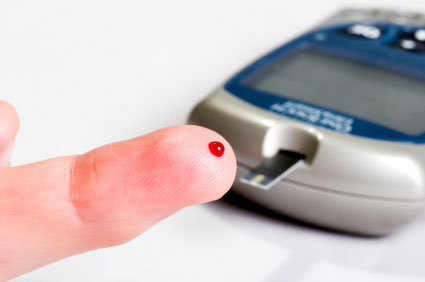The role of social media in schizophrenia: evaluating risks, benefits, and potential.

Curr Opin Psychiatry. 2016 Mar 10.
Torous J, Keshavan M.
Abstract:
PURPOSE OF REVIEW:
Patients with schizophrenia suffer from numerous social problems often because of negative symptoms of the illness and impairments in social cognition. Social media and social networks now offer a novel tool to engage and help patients navigate and potentially improve social functioning. In this review, we aim to explore how impaired neural networks in schizophrenia impair social functioning, examine the evidence base for social networks and social media to help in the role, consider the evidence for current risks and benefits of use, and discuss the future of social media and social networks for schizophrenia.
RECENT FINDINGS:
Patients with schizophrenia are increasingly connected to and engaged with social media. There is strong evidence that they own, use, and accept digital tools like smartphones and already use social media services like Facebook at high rates, especially among those who are younger. Less is known about the clinical risks and benefits of social media use in schizophrenia, although there are increasingly more social networking platforms being designed specifically for those with mental illness.
SUMMARY:
Social media tools have the potential to offer a plethora of new services to patients with schizophrenia, although the clinical evidence base for such is still nascent. It is important to ensure that both clinicians and patients are aware of and educated about the risks of using social media. Going forward, it is likely that social media will have an expanding role in care, with social media offering new pathways to address negative symptoms and impairments in social cognition in schizophrenia
Mais informações: http://www.ncbi.nlm.nih.gov/pubmed/26967314
Por: Cenita Pereira Borges 17 de março de 2016 às 15:07Genome-wide association analysis identifies 13 new risk loci for schizophrenia

Um novo estudo identificou 13 novas regiões do DNA nas quais variações genéticas podem levar à esquizofrenia, um transtorno psiquiátrico cuja causa exata ainda é desconhecida. Somadas às partes do genoma humano que já haviam sido relacionadas anteriormente ao transtorno, os pesquisadores estimam que existam 22 regiões genéticas envolvidas na doença. O DNA humano é composto por duas fitas que carregam uma sequência de nucleotídeos, representados pelas letras A, C, G e T. Os genes, a parte do DNA que carregam informações, são formados por uma sequência especial dessas letras. O que os cientistas descobriram nesse novo estudo foi que, quando há uma variação genética (ou seja, na ordem dos nucleotídeos) em alguma das 22 partes específicas dessa fita, o risco de esquizofrenia se torna maior.
Os autores dessa pesquisa chegaram a esse resultado após estudar casos de esquizofrenia e compará-los a pessoas livres da doença. A equipe também analisou estudos anteriores que avaliaram o genoma de indivíduos com o transtorno. Depois, os pesquisadores aplicaram as conclusões em amostras de DNA humano. Ao todo, quase 60.000 indivíduos foram envolvidos no trabalho.
Mais informações: http://www.nature.com/ng/journal/v45/n10/full/ng.2742.html
Por: Cenita Pereira Borges 10 de março de 2016 às 17:00Experimentos de privação de sono podem ser usados para desenvolver drogas para transtornos mentais

Ficar 24 horas sem dormir pode causar sintomas semelhantes aos da esquizofrenia, mesmo em pessoas saudáveis. A descoberta, publicada no periódico The Journal of Neuroscience na semana passada, pode ajudar no desenvolvimento de drogas para o tratamento da psicose - quadro em que o paciente confunde realidade com alucinações e delírios.
J Neurosci. 2014 Jul 2;34(27):9134-40.
Sleep deprivation disrupts prepulse inhibition and induces psychosis-like symptoms in healthy humans.
Petrovsky N, Ettinger U, Hill A, Frenzel L, Meyhöfer I, Wagner M, Backhaus J, Kumari V.
Abstract
Translational biomarkers, such as prepulse inhibition (PPI) of the acoustic startle response, are playing an increasingly important role in the development of antipsychotic drugs for schizophrenia and related conditions. However, attempts to reliably induce a PPI deficit by psychotomimetic drugs have not been successful, leaving an unmet need for a cross-species psychosis model sensitive to this widely studied surrogate treatment target. Sleep deprivation (SD) might be such a model as it has previously been shown to induce PPI deficits in rats, which could be selectively prevented with antipsychotic but not anxiolytic or antidepressant compounds. Here, in a first proof-of-concept study we tested whether SD induces a deficit in PPI and an increase in psychosis-like symptoms in healthy humans. In two counterbalanced sessions, acoustic PPI and self-reported psychosis-like symptoms (Psychotomimetic States Inventory) were measured in 24 healthy human volunteers after a normal night's sleep and after a night of total SD. SD decreased PPI (p = 0.001) without affecting the magnitude or habituation of the startle response (all p > 0.13). SD also induced perceptual distortions, cognitive disorganization, and anhedonia (all p < 0.02). Thus, extending previous rodent work, we conclude that SD, in combination with the PPI biomarker, might be a promising translational surrogate model for psychosis as this method represents a possibility to partially and reversibly mimic the pathogenesis of psychotic states.
Mais informações: http://www.jneurosci.org/content/34/27/9134.long
Por: Cenita Pereira Borges 03 de março de 2016 às 15:17Alterações cerebrais são evidentes no Diabetes Mellitus

O Diabetes Mellitus (DM) acomete uma grande parte da população mundial. A fisiopatologia dessa doença é principalmente lincada à destruição das células Beta pancreáticas. Entretanto, estudos recentes mostram que o DM também acomete o sistema nervoso central. Pacientes que sofrem de DM apresentam prejuízo cognitivo e uma maior probabilidade de terem transtornos psiquiátricos, incluindo a depressão. Muitos desses estudos foram realizados pela unidade de pesquisa em depressão do laboratório de Neurociências da UNESC. Um estudo aceito recentemente para publicação no periódico Current Neurovascular Research em parceria com o Laboratório de Fisiopatologia Experimental da UNESC revelou que o DM induzido experimentalmente levou a alterações importantes em proteínas cerebrais envolvidas com a plasticidade celular. O estudo fez parta da tese de doutorado de Maria Augusta B. dos Santos.
O resumo da publicação pode ser visualizado a seguir:
Curr Neurovasc Res. 2016 Feb 18.
Antioxidant therapy alters brain MAPK-JNK and BDNF signaling pathways in experimental Diabetes Mellitus.
Réus GZ, Dos Santos MA, Abelaira HM, Maciel AL, Arent CO, Matias BI, Bruchchen L, Ignácio ZM, Michels M, Dal-Pizzol F, Carvalho AF, Zugno AI, Quevedo J.
Abstract
This study was designed to investigate the effects of treatment with the antioxidants N-acetylcysteine (NAC) and deferoxamine (DFX) in intracellular pathways in the brain of diabetic rats. To conduct this study we induced diabetes in Wistar rats with a single injection of alloxan, and afterwards rats were treated with NAC or DFX for 14 days. Following treatment completion, the immunocontent of c-Jun N-terminal kinase (JNK), mitogen-activated protein kinase-38 (MAPK38), brain-derived neurotrophic factor (BDNF), and protein kinases A and C (PKA and PKC) were determined in the prefrontal cortex (PFC), hippocampus, amygdala and nucleus accumbens (NAc). DFX treatment increased JNK content in the PFC and NAc of diabetic rats. In the amygdala, JNK was increased in diabetics treated with saline or NAC. MAPK38 was decreased in the PFC of control and in diabetic rats treated with NAC or DFX; and in the NAc in all groups. PKA was decreased in the PFC with DFX treatment. In the amygdala, PKA content was increased in diabetic rats treated with either saline or NAC, compared to controls; and it was decreased in either NAC or DFX-treated groups, compared to saline-treated diabetic animals. In the NAc, PKA was increased in NAC-treated diabetic rats. PKC was increased in the amygdala of NAC-treated diabetic rats. In the PFC, the BDNF levels were decreased following treatment with DFX in diabetic rats. In the hippocampus of diabetic rats the BDNF levels were decreased. However, treatment with DFX reversed this effect. In the amygdala the BDNF increased with DFX in non-diabetic rats. In the NAc DFX treatment increased the BDNF levels in diabetic rats. In conclusion, both diabetes and treatment with antioxidants were able to alter intracellular pathways involved in the regulation of cell survival in a brain area and treatment-dependent fashion.
Mais informações: http://www.ncbi.nlm.nih.gov/pubmed/26891662
Por: Cenita Pereira 01 de março de 2016 às 21:03Biological pathways modulated by antipsychotics in the blood plasma of schizophrenia patients and their association to a clinical response

npj Schizophrenia 1, Article number: 15050 (2015)
Daniel Martins-de-Souza, Fiorella A Solari, Paul C Guest, René P Zahedi, Johann Steiner
Abstract: Proteomics is a valuable tool to unravel molecular mechanisms involved in human disorders. Considering the mediocre effectiveness of antipsychotics, which are the main class of drug used to treat schizophrenia, we analyzed a cohort of 58 schizophrenia patients who had blood collected before and after 6 weeks of antipsychotic treatment using a shotgun mass spectrometry proteomic profiling approach. Our aim was to unravel molecular pathways involved with an effective drug response. The results showed that all patients had essentially the same biochemical pathways triggered Independent of the antipsychotic response outcome. However, we observed that these pathways were regulated in different directions in blood samples from those who responded well to antipsychotics, compared with those who had a poorer outcome. These data are novel, timely and may help to guide new research efforts in the design of new treatments or medications for schizophrenia based on biologically relevant pathways.
Mais informações: http://www.nature.com/articles/npjschz201550
Por: Cenita Pereira Borges 25 de fevereiro de 2016 às 10:39
 Newsletter
Newsletter  RSS
RSS